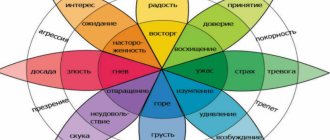This disease belongs to the category of severe mental disorders. With this pathological condition, the patient experiences uncontrollable visual and sound illusions. Patients may see non-existent pictures, blurry figures, images. The appearance of images is not associated with any external reasons or provocations in the form of external stimuli.
At the same time, the patient’s consciousness remains completely intact, without changes. Timely treatment of hallucinosis ensures a reduction in the manifestations of the diagnosis.
Content:
- Main forms and symptoms of the disease:
- Treatment.
- Prevention of relapse.
1.1. Acute (“classic”) hallucinosis. 1.2. Chronic alcoholic hallucinosis.
In addition to the negative impact on health, alcohol causes serious mental disorders that are difficult to treat. One of the most common is alcoholic hallucinosis (in specialized literature, such a disorder is also called hallucinatory insanity or hallucinatory delusions of alcoholics). This syndrome is a form of alcoholic psychosis, usually occurs after 10–15 years of addiction, is more common in women, and lasts from 4–5 weeks to six months or more.
Causes
Short-term transient hypertension (up to 4 weeks) can occur due to the rupture of neural connections caused by the death of significant volumes of cells in the cerebral cortex (for example, during heavy drinking).
Long-lasting hypertension (from a month to a year) occurs, as a rule, against the background of progressive alcoholic encephalopathy (focal or diffuse damage to brain structures).
A certain role in the development of hypertension is played by the patient’s existing vascular diseases, neurological disorders and hereditary predisposition.
Main forms and symptoms of the disease
The pathology is classified based on the duration of its persistence and the severity of clinical manifestations.
Acute (“classic”) hallucinosis
In the vast majority of cases, it occurs when trying to quit binge drinking on your own against the background of withdrawal symptoms. Accompanied by:
- auditory hallucinations, which the addict interprets in accordance with logic known only to him;
- panic attacks, severe fear;
- anxiety;
- paranoid delusions;
- concomitant autonomic disorders.
It begins abruptly, although sometimes the main symptoms may be preceded by a prodromal period, manifested by anxiety, depression, dizziness, and weakness.
The attack manifests itself in the evening or at night. The patient either cannot sleep or wakes up in fear after a short sleep. At the initial stage, simple illusions appear (noise, steps, crackling, whispering, individual words). Subsequently, they transform into a completely meaningful and consistent dialogue. The content of hallucinations is often threatening. These are accusations, condemnation for any actions or thoughts. The patient listens to them, sometimes participates in such “communication”, and falls into a state reminiscent of stupor.
The delusion that occurs against the background of hallucinosis is associated with its content. Fear, anxiety and despair prevail, and the patient behaves accordingly. Under the pressure of feelings of guilt, he can make suicidal attempts, flee, resort to self-defense: barricade windows and doors, turn off the phone, set up some kind of “traps” in the apartment, arm himself with improvised means in anticipation of “enemies.” In such a state, the patient is truly dangerous: he can rush at any person, it is impossible to convince him.
Without treatment, acute alcoholic hallucinosis lasts from several days to a month and ends abruptly, after deep sleep. After this, the alcoholic remembers both the content of the delirium and what was happening around him, but self-criticism does not always arise; repeated binge drinking is more likely.
There are several forms of acute alcoholic hallucinosis:
- Reduced.
It has a short duration (up to 2–3 days). It may be limited to hallucinations that are neutral in content, go away on their own, or transform into a more complex and dangerous psychosis. - Mixed.
It is combined either with severe delusions of persecution, or with delirious disorders and visual (less often tactile) illusions.
Narcologists also encounter atypical hallucinatory psychosis, which can occur in several ways:
- With partial confusion.
The addict usually imagines pictures of global cataclysms and various fantastic scenarios. - Alcoholic stupor.
At the peak of hallucinations, the patient is completely immobilized and does not respond to external stimuli. This state is sometimes abruptly replaced by psychomotor agitation. - With mental automatisms.
A person is confident that his thoughts are known and controlled by those around him. - Subacute.
With this type of disorder, orderly behavior is preserved, but unexpressed auditory illusions are present, and the patient’s mood is depressed. Delusions of jealousy and persecution cannot be ruled out.
Chronic alcoholic hallucinosis
Relatively rare. It begins with an acute attack or an episode of alcoholic delirium. The initial stage is characterized by pronounced, realistic visual and auditory hallucinations and lasts up to 2 weeks. Then the disease becomes chronic and can manifest itself in one of the following options:
- Disorder without delirium.
The most common form. It starts with anxiety and sleep disturbances. While falling asleep, a person hears that someone is creeping up on him, trying to grab him or kill him. Soon auditory illusions join in, and sometimes physical illusions (insects, unreal creatures, shadows, etc.). At first, strong fear arises, but subsequently the alcoholic gets used to the illusory sensations, and even returns to everyday activities. Over time, hallucinations weaken, exacerbating under the influence of external stimuli. - Delusional disorders that are persistent and systematic.
The behavior of an alcoholic changes radically: he constantly hides from imaginary pursuers, hides, fears surveillance, revenge, etc. - Mixed form of chronic alcoholic hallucinosis.
The most severe type of illness. Symptoms resemble those of schizophrenia and other serious mental disorders. Sharp mood swings from euphoria to deep depression, from stupor to aggressive psychomotor agitation are typical. An alcohol addict is suspicious, constantly suspects those around him, and is sure that they are to blame for the voices sounding in his head.
General symptoms of hallucinosis
A common feature for all hallucinosis is the person’s retention of consciousness. The patient understands who he is, what time it is, and where he is. Otherwise, the clinical picture of the problem depends on the type of disease. Charles Bonnet syndrome causes:
- cartoon visions;
- people with distorted facial features;
- hallucinations appear and disappear suddenly;
- The pictures are saved in full.
Often this phenomenon is combined with atherosclerosis, and sometimes accompanies senile dementia, in which case hallucinosis is eliminated and Alzheimer's is treated.
In Lhermitte's disease, hallucinosis manifests itself somewhat differently:
- observed in the dark;
- They look like vague images of animals or people.
In the verbal form of the disease the following are noted:
- voices (one or several);
- they discuss him and his surroundings;
- ordered to perform certain actions.
Treatment of hallucinosis of alcohol origin is carried out after consultation with a narcologist; this type of mental disorder is characterized by the following symptoms:
- high anxiety;
- fear without reason;
- vivid and believable visual images;
- voices coming from objects;
- obsessive thoughts about death or the death of relatives;
- sleep disturbance;
- suicide attempts.
Treatment
Therapy is carried out exclusively in a specialized hospital. In this case, the doctor needs to simultaneously solve several problems at once:
- clean fabrics from ethyl alcohol;
- normalize metabolic processes and functions of the body as a whole;
- restore full functioning of the nervous system.
- For this purpose, use:
- drugs to activate metabolism (electrolyte solutions, adsorbents, amino acids, cocarboxylase, etc.);
- nootropics;
- hepatoprotectors;
- analgesics;
- medications for the correction of concomitant disorders (cardioprotectors, drugs to normalize blood circulation and vascular tone, diuretics, etc.).
Detoxification itself helps reduce the symptoms of hallucinosis. But in addition, strong sedatives are mandatory. The mode of their administration is selected strictly individually and used under round-the-clock medical supervision to avoid overdose.
Service price
- HOSPITAL Day hospital5 000
- Day hospital with intensive care8,000
- 24-hour hospital (all inclusive, cost per day) 12,000
- 24-hour hospital (all inclusive, cost per day). Single occupancy24,000
- 24-hour hospital (all inclusive, cost per day). Single occupancy in a superior room 36,000
- Primary family counseling for relatives of patients undergoing inpatient treatment free of charge
- Group psychotherapy for relatives of patients undergoing inpatient treatment free of charge
- Group psychotherapy for 24-hour and day hospital patients free of charge
- Individual post for a hospital patient (if indicated)6,000
Hallucinosis is a painful condition characterized by the constant presence of hallucinations (deceptions of perception) with clear consciousness.
In the presence of the phenomenon of pseudohallucinations, they speak of pseudohallucinosis. Pseudohallucinations are false perceptions localized within the body (in the head, in the body), characterized by a feeling of being made by someone from the outside. For example, a voice sounding in the head is perceived as “induced by someone and purposefully influencing.”
Prevention of relapse
Intensive treatment in a hospital does not mean that alcoholic hallucinosis will not happen again. To prevent a repeat episode, comprehensive therapy for alcoholism is necessary. The best option is to undergo a course of physiotherapy, hardware cleansing, and psychotherapy in a clinical setting.
After normalization of health, comprehensive diagnostics and consultations with highly specialized specialists are necessary. As a rule, with such a long period of alcohol abuse, chronic diseases of the liver, pancreas, and heart failure are diagnosed. And it is not only alcoholism that requires treatment, but also associated pathologies.
The final stage of therapy is rehabilitation. Modern drug treatment clinics offer various readaptation schemes. The most common is the 12-step system and one of its variations (Minnesota model), excellent results are noted after rehabilitation using the Shichko method.
The course of alcoholic hallucinosis
Treatment of hallucinosis caused by drinking alcohol-containing strong drinks is carried out in a drug treatment clinic or a specialized department. Its main difference from alcoholic delirium is that the patient remains conscious and is able to navigate in space.
In this case, a person experiences predominantly auditory hallucinations, most often accompanied by delusions. He hears voices from the outside that threaten to kill him or the cries of his children and loved ones asking for help. Sounds can be monotonous or increasing in nature, disappear and appear again.
This phenomenon causes the formation of paranoid tendencies, when treatment of persecutory mania, severe fear and anxiety may be required. The appearance of such a disorder is preceded by a change in mood, which the patient characterizes as severe melancholy and reluctance to live.
Alcoholic hallucinosis occurs with prolonged consumption of large doses of alcohol. Most often it is registered in people who have been drinking for 10-15 years or more, in the second or third stage of addiction. Tolerance to ethyl alcohol in such patients is usually higher than in persons with manifestations of delirium. There are studies proving that hallucinosis occurs when ethanol and its breakdown products damage the hypothalamus in the body. And withdrawal syndrome further provokes the formation of this deviation.
Literature:
- Clinical features of acute alcoholic hallucinosis. Alikulov B.A.
- Teshabayeva G.D. Magazine “Health is the basis of human potential: problems and ways to solve them”, 2014
- Alcoholic psychoses: clinical picture, classification. Gofman Alexander Genrikhovich, Orlova Maria Alekseevna, Meliksetyan Anait Sergeevna / Journal “Social and Clinical Psychiatry” 2010
- Features of the pathomorphosis of alcoholic psychoses. Umanskaya P.S. / Magazine "Tyumen Medical Journal" 2010
Need some advice?
OR CALL A DOCTOR
CALL!
+7









